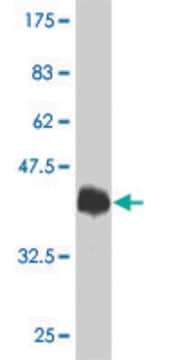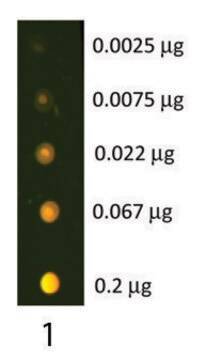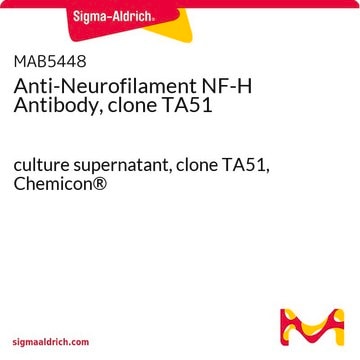SAB4200705
Anti-Neurofilament 200 (Phos and Non-Phos) antibody, Mouse monoclonal
clone N52, purified from hybridoma cell culture
Synonym(s):
Anti-CMT2CC, Anti-NFH
About This Item
Recommended Products
antibody form
purified from hybridoma cell culture
antibody product type
primary antibodies
clone
N52, monoclonal
mol wt
~200 kDa
species reactivity
mouse, pig, feline, rat, monkey, bovine, human
concentration
~1.0 mg/mL
technique(s)
immunoblotting: 2.5-5 μg/mL using human neuroblastoma SH-SY5Y cell line fresh lysate
immunofluorescence: suitable
immunohistochemistry: 10 μg/mL using heat-retrieved formalin-fixed, paraffin-embedded human Cerebellum sections
isotype
IgG1
UniProt accession no.
shipped in
dry ice
storage temp.
−20°C
target post-translational modification
unmodified
Gene Information
pig ... NEFH(100156492)
General description
Specificity
Application
- immunoblotting
- immunofluorescence
- immunohistochemistry
Biochem/physiol Actions
Physical form
Storage and Stability
Disclaimer
Not finding the right product?
Try our Product Selector Tool.
Storage Class Code
10 - Combustible liquids
Flash Point(F)
Not applicable
Flash Point(C)
Not applicable
Certificates of Analysis (COA)
Search for Certificates of Analysis (COA) by entering the products Lot/Batch Number. Lot and Batch Numbers can be found on a product’s label following the words ‘Lot’ or ‘Batch’.
Already Own This Product?
Find documentation for the products that you have recently purchased in the Document Library.
Our team of scientists has experience in all areas of research including Life Science, Material Science, Chemical Synthesis, Chromatography, Analytical and many others.
Contact Technical Service







